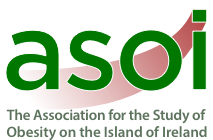Enhanced fasting and post-prandial plasma bile acid responses after Roux-en-Y gastric bypass surgery
- Categories: Bariatric Surgery
Type Article
Journal Article
Authors
M. Werling; R. P. Vincent; G. F. Cross; H. U. Marschall; L. Fändriks; H. Lönroth; D. R. Taylor; J. Alaghband-Zadeh; T. Olbers; C. W. Le Roux
Year of publication
2013
Publication/Journal
Scandinavian Journal of Gastroenterology
Volume
48
Issue
11
Pages
1257-1264
Abstract
Objective. Exogenous bile acid (BA) administration is associated with beneficial metabolic effects very similar to those seen after Roux-en-Y gastric bypass (RYGB) surgery. Re-routing of bile into a biliopancreatic limb with simultaneous exclusion of food occurs after RYGB, with subsequent increased fasting plasma BAs. The study assessed fasting and post-prandial plasma BA response before and 15 months after RYGB. Material and methods. The prospective study recruited 63 obese individuals (43 females), aged 43 (36-56) [median (IQR)] years. Blood samples were collected before and every 30 min for 120 min after a standard 400 kcal meal. Fasting and post-prandial plasma BAs, glucagons like peptide-1 (GLP-1), -tyrosine (PYY), fasting C-reactive protein (CRP), glucose and insulin were measured and homeostasis model assessment-insulin resistance (HOMA-IR) was calculated. Results. Following RYGB, body mass index, CRP, fasting glucose and HOMA-IR decreased; 43.7 (39.3-49.2) kg/m2 to 29.2 (25.1-35.0) kg/m2, 7.9 (4.1-11.9) mg/L to 0.4 (0.2-1.0) mg/L, 5.5 (5.0-6.0) mmol/L to 4.6 (4.3-4.9) mmol/L and 5.9 (3.5-9.2) to 1.7 (1.1-2.2), respectively, all P < 0.001. Fasting total BAs, GLP-1 and PYY increased after RYGB; 1.69 (0.70-2.56) μmol/L to 2.43 (1.23-3.82) μmol/L (P = 0.02), 6.8 (1.5-15.3) pmol/L to 17.1 (12.6-23.9) pmol/L (P < 0.001) and 4.0 (1.0-7.1) pmol/L to 15.2 (10.0-28.3) pmol/L (P < 0.001), respectively. The area under the curve for post-prandial total BAs, total glycine-conjugated BAs, GLP-1 and PYY were greater after RYGB; 486 (312-732) μmol/L/min versus 1012 (684-1921) μmol/L/min, 315 (221-466) μmol/L/min versus 686 (424-877) μmol/L/min, 3679 (3162-4537) pmol/L/min versus 5347 (4727-5781) pmol/L/min and 1887 (1423-2092) pmol/L/min versus 3296 (2534-3834) pmol/L/min, respectively, all P < 0.0001. Conclusion. Weight loss following RYGB is associated with an increase in post-prandial plasma BA response due to larger amounts of glycine-conjugated BAs. This suggests up regulation of BA production and conjugation after RYGB. © 2013 Informa Healthcare.
